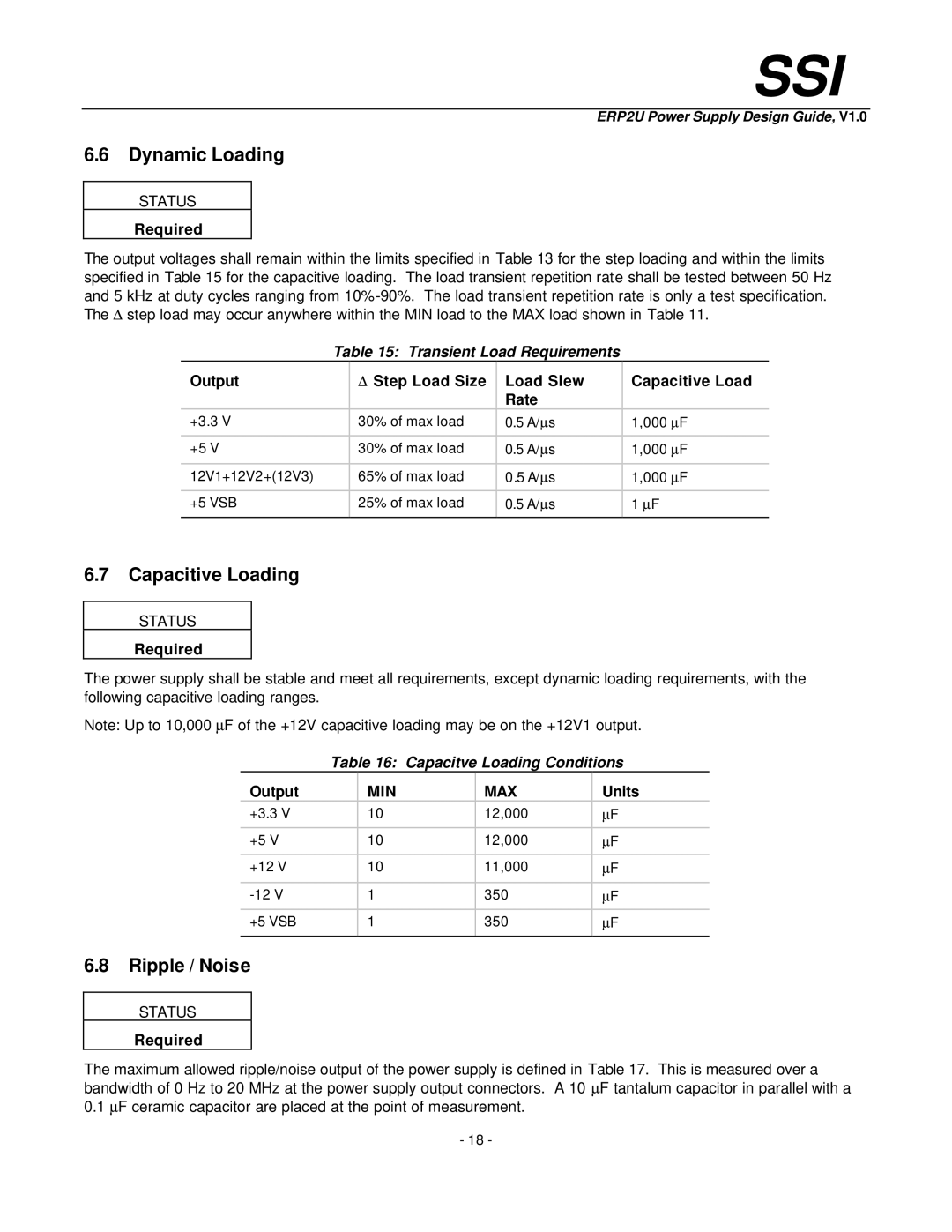
SSI
ERP2U Power Supply Design Guide, V1.0
6.6Dynamic Loading
STATUS
Required
The output voltages shall remain within the limits specified in Table 13 for the step loading and within the limits specified in Table 15 for the capacitive loading. The load transient repetition rate shall be tested between 50 Hz and 5 kHz at duty cycles ranging from
Table 15: Transient Load Requirements
Output | Δ Step Load Size | Load Slew | Capacitive Load |
|
| Rate |
|
+3.3 V | 30% of max load | 0.5 A/μs | 1,000 μF |
|
|
|
|
+5 V | 30% of max load | 0.5 A/μs | 1,000 μF |
|
|
|
|
12V1+12V2+(12V3) | 65% of max load | 0.5 A/μs | 1,000 μF |
|
|
|
|
+5 VSB | 25% of max load | 0.5 A/μs | 1 μF |
|
|
|
|
6.7Capacitive Loading
STATUS
Required
The power supply shall be stable and meet all requirements, except dynamic loading requirements, with the following capacitive loading ranges.
Note: Up to 10,000 μF of the +12V capacitive loading may be on the +12V1 output.
Table 16: Capacitve Loading Conditions
Output | MIN | MAX | Units |
+3.3 V | 10 | 12,000 | μF |
|
|
|
|
+5 V | 10 | 12,000 | μF |
|
|
|
|
+12 V | 10 | 11,000 | μF |
|
|
|
|
1 | 350 | μF | |
|
|
|
|
+5 VSB | 1 | 350 | μF |
|
|
|
|
6.8Ripple / Noise
STATUS
Required
The maximum allowed ripple/noise output of the power supply is defined in Table 17. This is measured over a bandwidth of 0 Hz to 20 MHz at the power supply output connectors. A 10 μF tantalum capacitor in parallel with a
0.1μF ceramic capacitor are placed at the point of measurement.
-18 -
